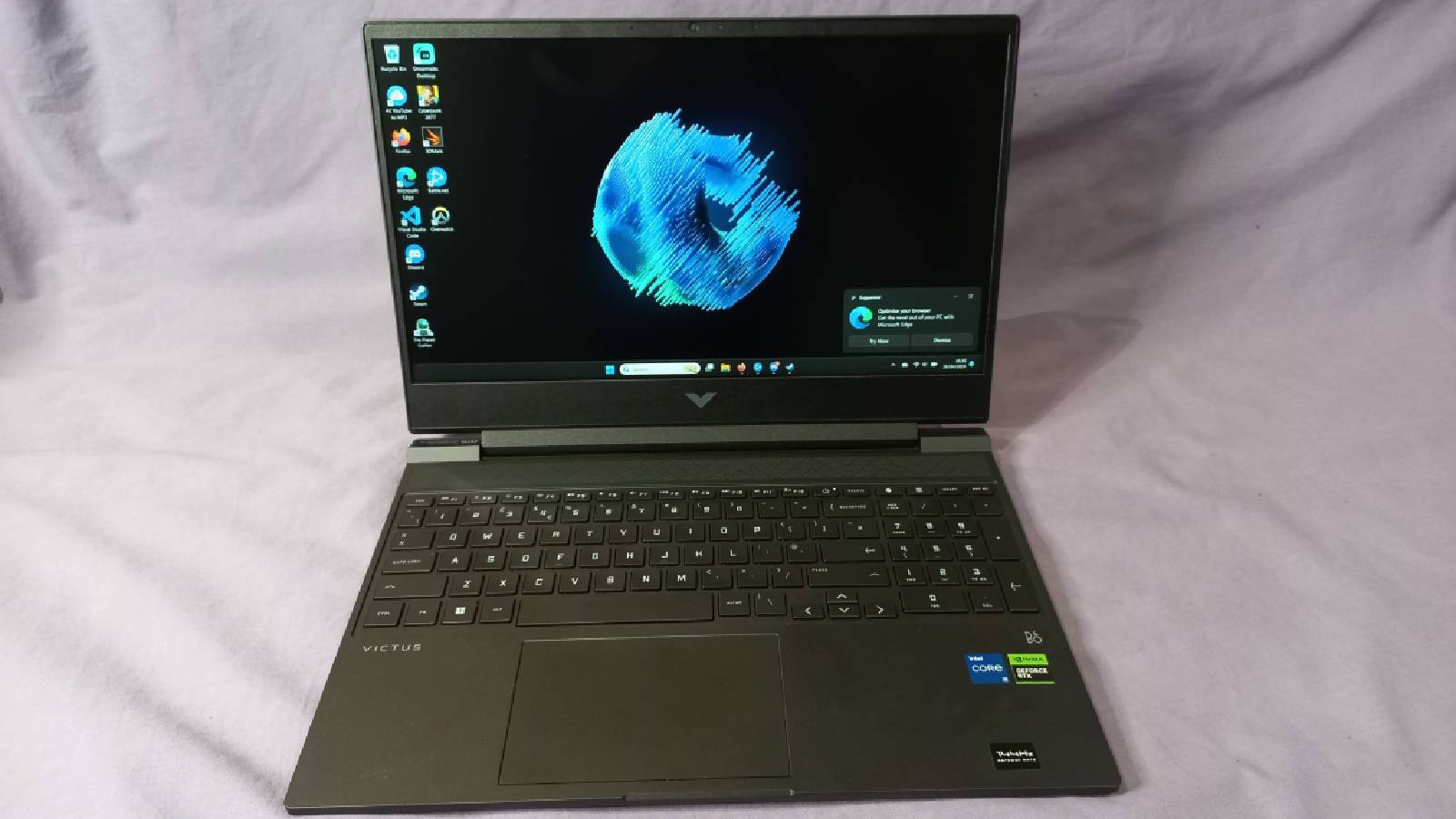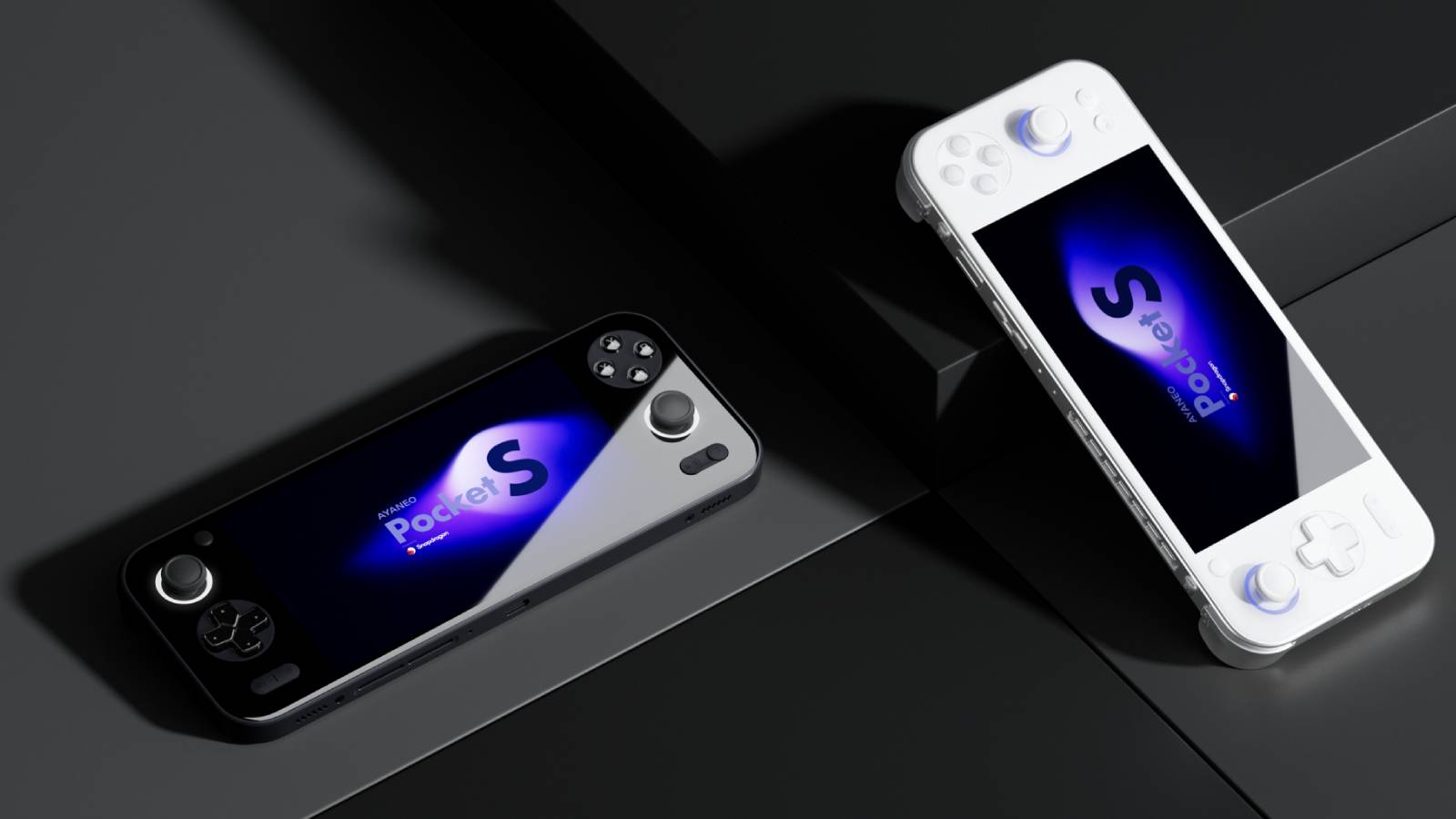Ayaneo Air 1S review: Portable handheld power
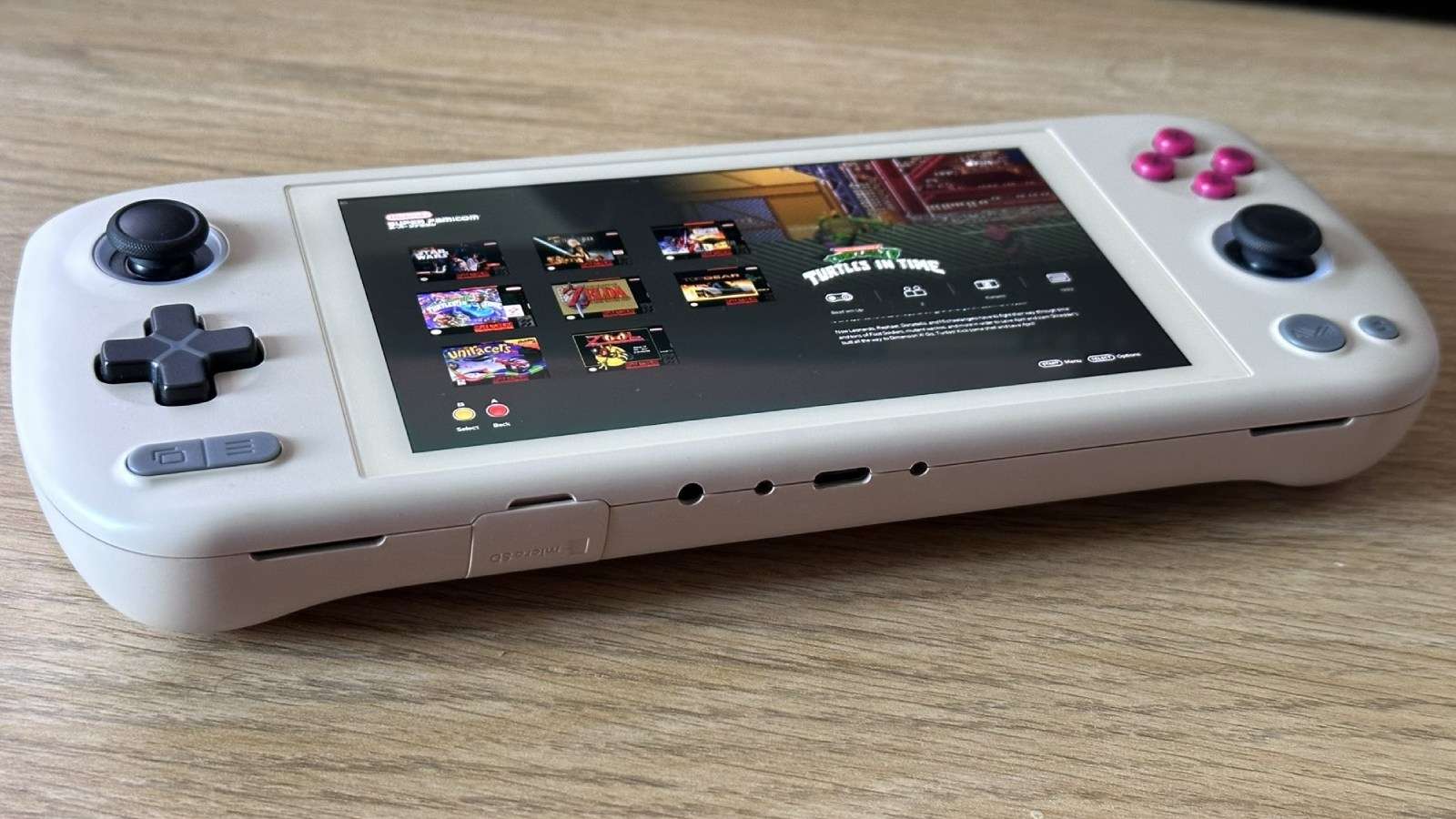 Dexerto
Dexerto The Ayaneo Air 1S is a refresh to the tried and true Ayaneo Air shell, fully equipped with the latest Ryzen processors to deliver a powerful, compact handheld.
There are few companies as well-versed in the art of creating portable handheld systems as Ayaneo. Having released dozens of dedicated handhelds this year alone, the Ayaneo 1S’s power and efficiency make it the ultimate portable powerhouse.
I spent over a month testing the device and traveling with it in several different countries. The result? I could game like I was at home on my gaming PC, with the added benefit of not having to heave my Steam Deck around, thanks to the Ayaneo Air 1S’s beefy specifications. This Windows 11 handheld is among the best we’ve tested.
Key specs
- CPU: AMD Ryzen 7 7840U
- GPU: AMD Radeon 780M
- RAM: 32GB
- Storage: 2TB NVMe SSD
- Panel: 5.5-inch, AMOLED panel
- Price: Starts from $799, $1,179 (Unit reviewed)
- Where to buy: IndieGoGo
Design
 Dexerto
Dexerto The ayaneo Air 1S might be one of the most impressive portable handhelds we’ve looked at. The console retains the shape of the Ayaneo Air Pro, which we reviewed last year, and you can expect all of the premium functions like hall sensing analog sticks, triggers, and an ergonomic shell.
Up top you get a fingerprint scanner and volume rocker in addition to a USB port, as well as a USB port at the bottom, which is joined by a MicroSD card slot for easy expansion. The buttons feel great, and the triggers are among the best that we have ever used. Ayaneo’s sheer product design prowess shows through, as even during intense sessions of Hades or Rogue Legacy 2 showed us that while the device is small, it remains incredibly comfortable throughout.
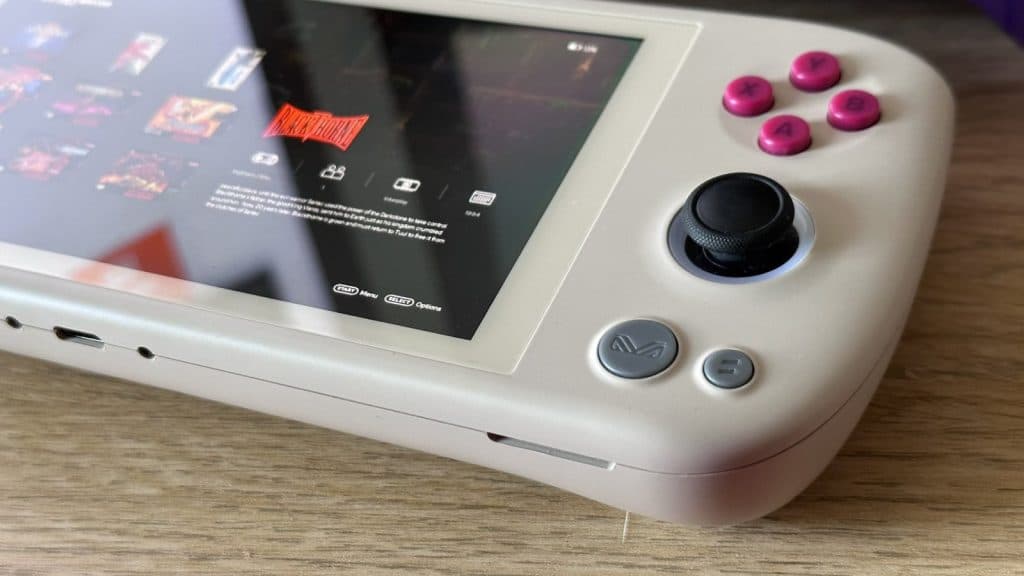 Dexerto
Dexerto One thing to note is that the screen can get uncomfortably hot while running cutting-edge AAA titles, which can be disconcerting, but the device never got hot enough to trigger its thermal limit and automatically power off, even after I went through demanding segments of Armored Core 6.
One thing I would have liked to have seen with this iteration is the addition of back buttons, which will debut with the upcoming Ayaneo Kun, it feels like a missed opportunity to not include this in a Windows 11 device of this nature, especially as others might be used to them on Steam Deck.
Retro Powered
The colorway we received the Ayaneo Air 1S in is reminiscent of a classic SNES, which we absolutely loved. It’s a shame that this color is limited to the higher-end model, as we much prefer it over the other colors available on the product, too.
Speaker performance
Now that Ayaneo is a more mature handheld business, we really wish that the company included better-performing speakers in its chassis. Every title barring retro games sounded muddy, with nonexistent lows and mids, and most of the mix focusing on the high end. This leaves a tinny impression on the ears, so be sure to equip yourself with a pair of earbuds, or risk making your ears bleed.
Software
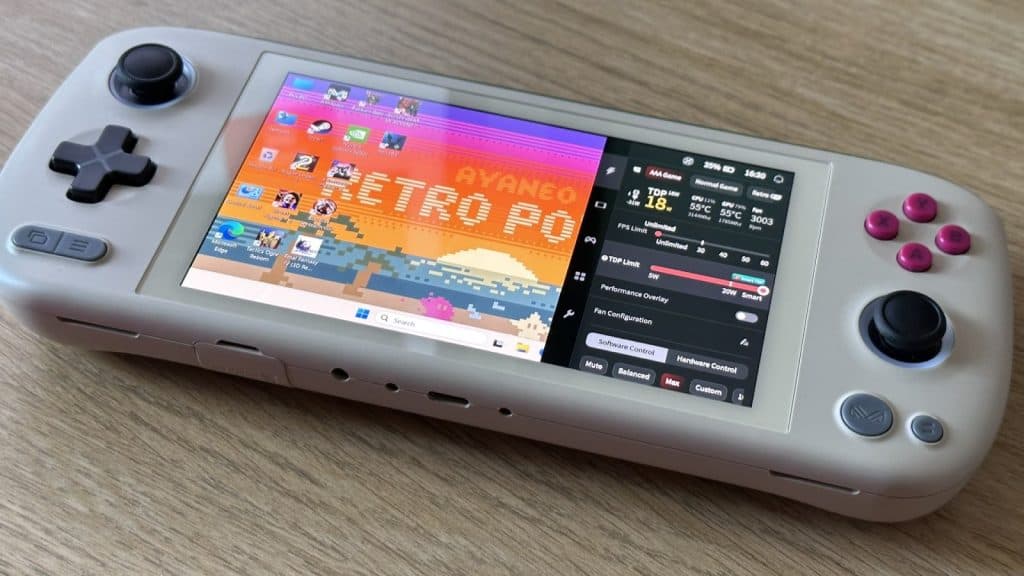 Dexerto
Dexerto Ayaspace has been spruced up since I last tested it on the Ayaneo 2, with Ayaspace 2, you now have a much more intuitive interface, with additional functions that allow the power of the Ryzen 7 7840U to shine. You can set universal FPS limits, TDP, and resource monitoring at the flick of a switch. To our astonishment, this was almost flawless.
The best feature here is “Smart TDP”, which will automatically adjust the amount of power that the device uses on the fly. This can extend otherwise limited battery life in scenarios that you might be playing lighter titles, without having to fiddle about in the settings yourself.
Of course, shipping with Windows 11 in the first place causes its own pitfalls, but that’s the reality of picking up a handheld of this caliber that is not the Steam Deck. Maybe in the future, Ayaneo will instead build custom images of SteamOS for users, which makes for a much smoother overall experience. But, with that in mind, Ayaspace 2.0 is a massive leap compared to its original implementation, and its developers are making strides toward making a once finicky experience slightly more streamlined.
Again, the finickiness of the handheld is unavoidable for all Windows handhelds and is not an issue solely for Ayaneo, but their solution is one of the best we’ve tested.
Performance

The AMD Ryzen 7 7840U is one of the most powerful portable chipsets you can muster, and the Ayaneo 1S outperforms the Steam Deck in pure performance if you give it enough TDP to play with. We set the smart TDP function on for all testing, and it always worked as promised, whether we were emulating a Gamecube title, or running Starfield on the handheld.
No matter what we threw at it, whether that be a RetroBat setup for emulating older systems, or running Cyberpunk 2077, the handheld managed to stand up and weather even the most harsh of workloads. It’s here that the 1200p screen shines, and we love the AMOLED making games look even better than on Steam Deck, or bigger handhelds.
Just remember to scale your interfaces up, so be sure to either use Ayaspace, or make use of things like Retrobat or Steam Big Picture mode to make the experience much smoother.
We only wished that the company also offered a screen that has a variable refresh rate, since that could also save on precious battery life. Until then, setting a 30FPS limit to the more demanding titles and changing around settings allowed us to run almost anything.
Battery life & fan noise
Running a demanding title results in around an hour and a half of battery life for the Ayaneo 1S, but playing or emulating retro titles or lighter indies extended this by around an hour. One thing to note is that the device gets warm, and you can adjust fan settings, which can get audibly loud, if you are in quiet settings.
We spent a two-hour flight playing nothing but Rogue Legacy 2, and the handheld managed to perform incredibly well, without us having to reach for a charger, though the battery was indeed left depleted at the end of our session.
Synthetic benchmarks
| 3DMark | Ayaneo Air 1S (Smart TDP) | Ayaneo 2S (33W) | Ayaneo 2 | Asus ROG Ally | Steam Deck |
| Time Spy | 3102 | 3146 | 2700 | 3114 | 1650 |
| Time Spy Extreme | 1425 | 1437 | 1286 | 1481 | – |
The Ayaneo Air 1S performed admirably, even when compared to some of the most powerful handhelds you can purchase today, like the Asus ROG Ally. While there are slightly lower scores than its bigger brethren, it is also much smaller, and if you’re willing to pay a premium, it might be an ideal handheld for you.
Should you buy it?
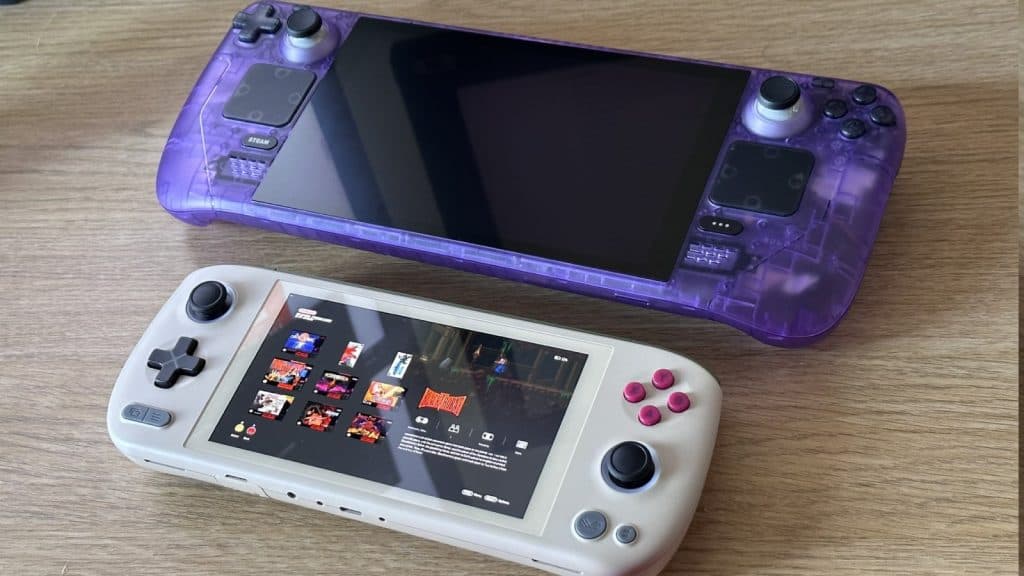 Dexerto
Dexerto The Ayaneo Air 1S is a premium product, like any miniaturized tech, from ITX PCs to the compact Razer Blade 14, you should expect to pay a bit more for the privilege of having this amount of power in this kind of form factor.
The verdict: 4/5
But, that size also makes the device much more travel-friendly than other options like the ROG Ally, Ayaneo 2S, or the Steam Deck, and it’s why I ended up using it much more than those other options, too. While the battery life is an insurmountable issue of physics, you can still get a good gaming session in without having to reach for a charger, and considering you can run just about every modern gaming title on the system, it’s great.
We just wished there were additional design updates like trackpads or back buttons added to the system, as it would have only enhanced the experience much more, otherwise, it’s a very iterative update from the upstart, but a welcome one, as it now houses incredibly competitive power compared to its contemporaries. Just remember, using Windows 11 is less than ideal on a screen this small.
